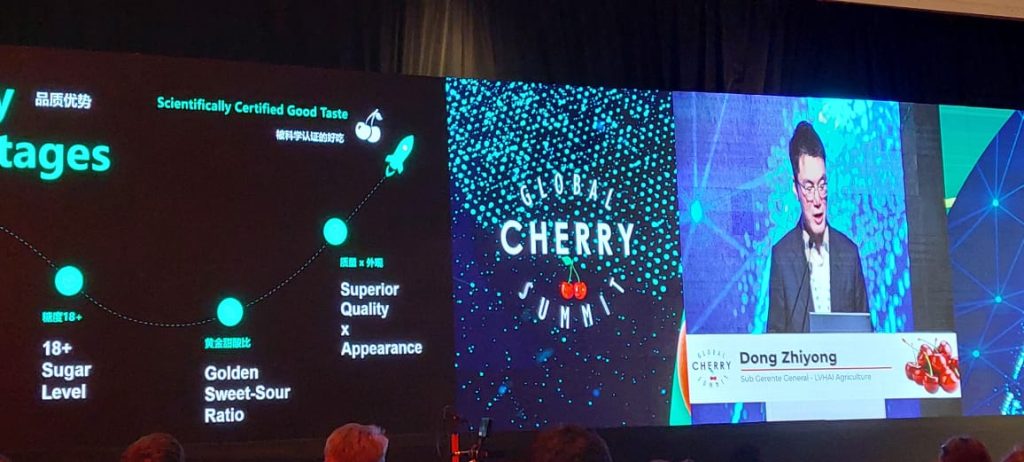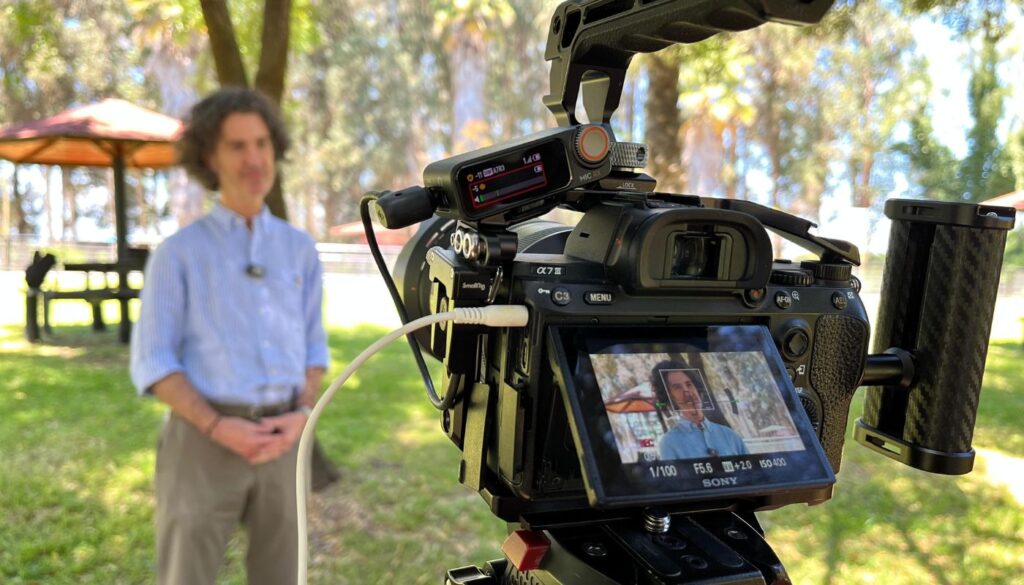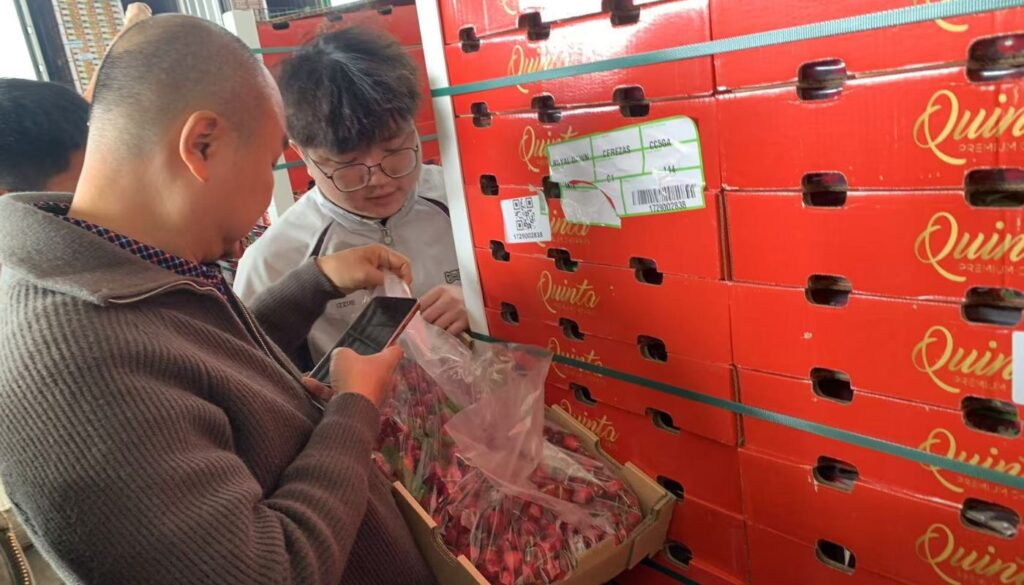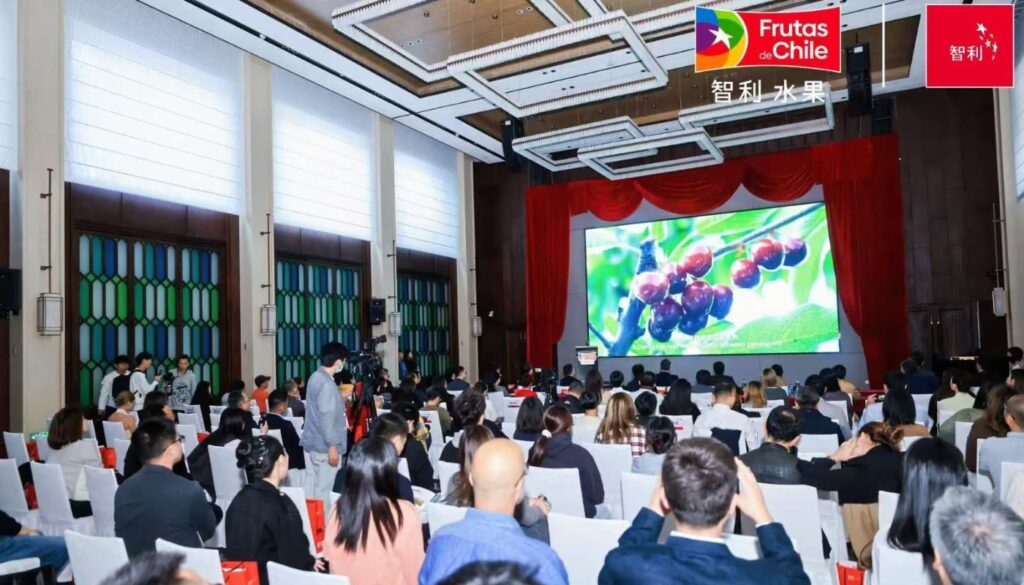This past Thursday, a new edition of the Cherry Summit event was held, a meeting organized by Yenzten Group and Frutas de Chile, where different topics related to the cherry industry were addressed.

Among the exhibitors was Claudia Soler, Manager of the Chilean Fruit Cherry Committee, who explained that one of the great challenges facing the local industry is associated with marketing campaigns and how to reach young people in China, who are consuming fewer cherries and doing so in different ways, preferring online shopping.
“As a result of the growth we expect to have in exports this coming season, with 115 million boxes and 125 million boxes during the following season, we have to incorporate 110 million consumers into the category, that is, 110 million Chinese who do not consume cherries, start doing so. That is the great challenge we have as a committee and that is why we must continue investing jointly in the Chinese market.”
Another thing that is beginning to attract the attention of Chileans is related to the Chinese market and production, which is growing strongly and where, according to speakers at the meeting such as Dong Zhiyong, deputy general manager of LVHAI Agricultire, they are working with cutting-edge technologies for the production of cherries at different stages of the year and with a view to increasing the quality and homogeneity of the fruit.
“Our main strength is the high standards we have. Freshness is one of the things most appreciated by consumers and that is precisely one of our advantages, which is also very important for the production of this fruit,” explained the specialist.
Along these lines, Soler argued that as a committee they hope to travel to China next week in order to learn what is being done in the local market. “Chinese cherries are out of season, what happens is that there is a part that they are growing in greenhouses, which may affect us or may become a threat. Precisely in the greenhouse part, they manage to get out in February, which clashes a bit with our production and that is why we also want to visit the Chinese on this trip and see what they are doing.”

The weather does not give in
In another line, another of the talks was directed to the climatic area, where the specialist Fernando Santibañez, Director of Postgraduate Studies and Research of the Faculty of Natural Sciences at the U. San Sebastián, confirmed that climatic conditions are unlikely to “improve” in the coming years, since we would be in a phase of “search for balance”, which responds to the excess of CO2 generated by humans which, together with other factors, create a highly complex scenario for cherry production.
The main threats include high temperatures and the stress they cause in plants, warm autumns and the difficulty they have in entering dormancy, drought and decreased rainfall, which could be reversed in hundreds of years.
In the central region specifically, extreme cold and late polar frosts are some of the most complex scenarios. “The central region will surely see more hail, which can cause damage as occurs in other latitudes such as on the trans-Andean side, therefore, I do not rule out that in the future we will have to deal with hail protection systems, particularly in the foothills, because we seek out foothills because of their early onset, but we are exposed to hail, which is increasing in Chile,” explained Santibañez.
Finally, Iván Marambio, President of Frutas de Chile, highlighted the opportunity to participate in events such as the Cherry Summit, “it is an activity that is perhaps the perfect closing to the season, since the entire industry comes together; producers, exporters and stakeholders in general, many people come from outside and a mix of opinions is produced that is very good for the industry to analyze the season that has just ended and to project the one that begins next October.”








